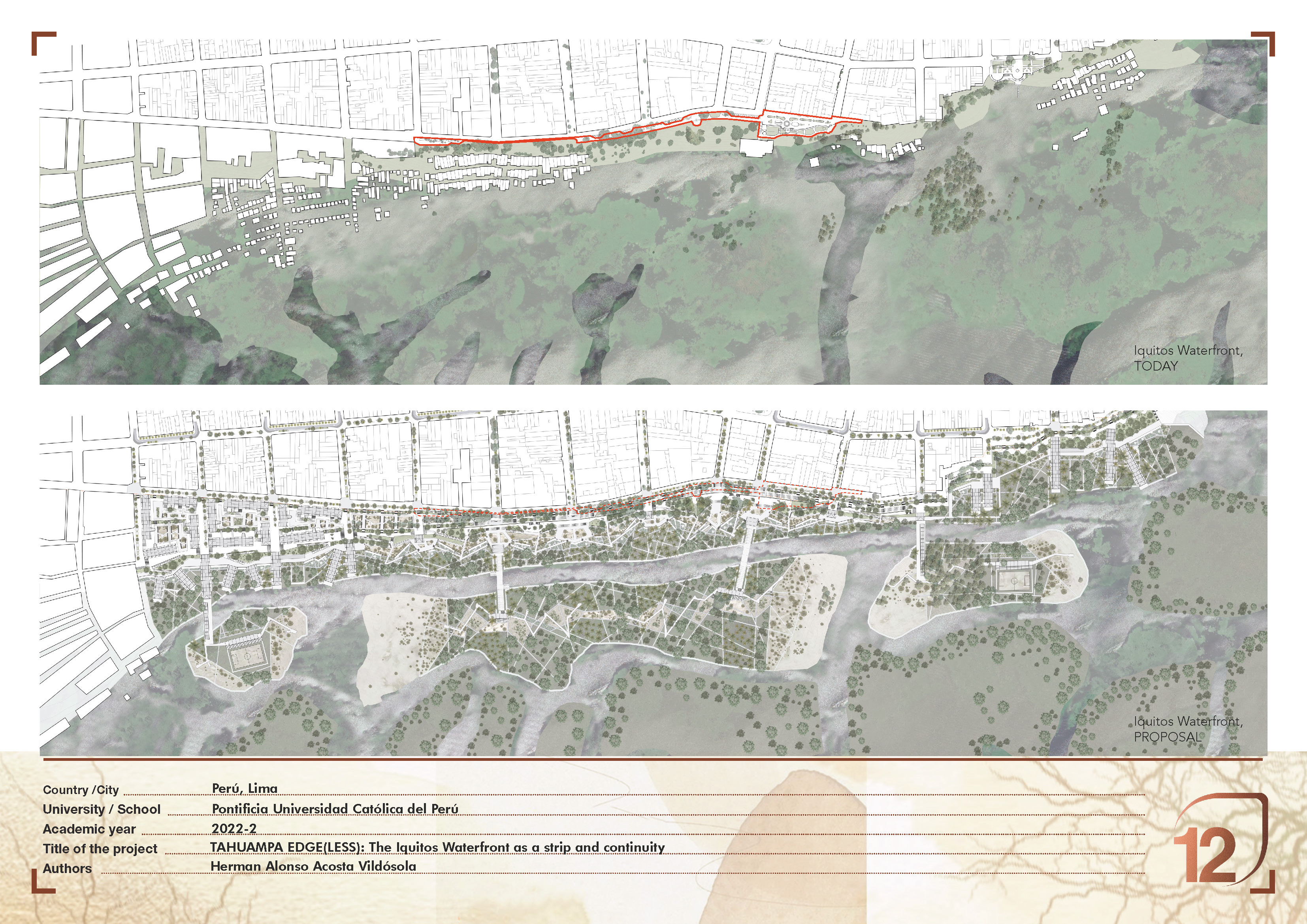
TAHUAMPA EDGE(LESS): The Iquitos Waterfront as a strip and continuity
PFC1
Pontificia Universidad Católica del Perú
Iquitos today is disjointed from the nature around it. The “edges”, limits between two different areas (Lynch, 1960), are very marked and create barriers between two social sectors: one urban; and another, more linked to the river, territorial.
It is argued that the Waterfront, a typical edge, does nothing more than widen the gaps in a city, even preventing the articulation of the inhabitants with the rivers and other ecosystems. The definition, then, of what is known as the Waterfront is very “western”, imposed on the territorial characteristics of the Amazon as the variability of the environment due to the seasons of flooding and emptying of the river is not considered in its extension and design.
Thus, the interest in the research project arises in search of a solution at the urban level that involves landscape conceptions to the complexity of a specific public space, since it seeks to recover the relationships with the different aquatic ecosystems of the Amazon, many of these lost due to the horizontal expansion of the city.
Therefore, the project is based on both urban and territorial variables, where the concept of “tahuampa” stands out, a natural space used as a reference in each space of the project. The main objective is to reincorporate the natural dynamics of as many aquatic ecosystems as possible, to the urban dynamics of the city, through the articulation of the Amazonian edges, specifically the Iquitos Waterfront.
